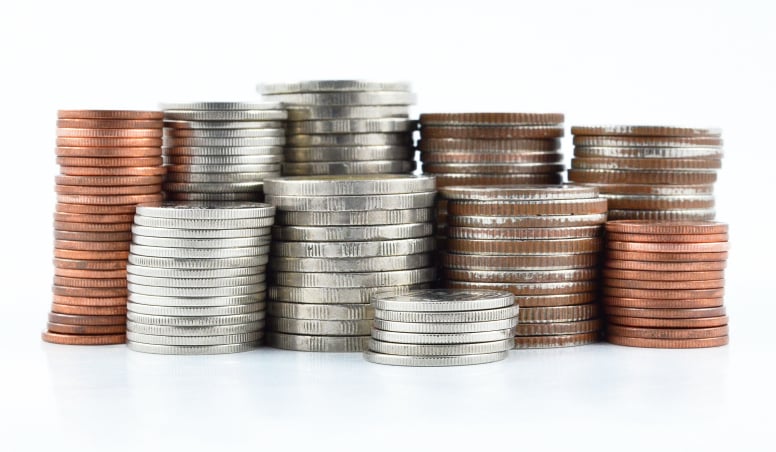Companies and Brands
Is the Dividend Hike a Disappointment From Procter & Gamble?
Published:
Procter & Gamble Co. (NYSE: PG) is one of the great iconic American companies, and it continues to have dividend growth year after year. After an announcement on Friday, P&G said that 2015 would mark the 59th consecutive year in which the company raised its dividend. It also marks the 125th consecutive year that a dividend has been paid. Unfortunately, some investors might have felt at least a little disappointed in the hike. The question is whether the investors should be happy enough with what they were given. Source: Thinkstock
Source: Thinkstock
P&G announced that the increase in the quarterly dividend would move from $0.6436 to $0.6629 per share. This represents a mere 3% dividend hike from 2014 — less than half the 2014 dividend hike of 7%. Investors have to consider what is taking place in the global economy, and they have to consider what is happening inside of P&G itself before they cast a negative opinion vote on P&G’s dividend.
The first thing to consider is that P&G now expects to pay roughly $7.4 billion in dividends to shareholders in its fiscal year 2015. The company further said that this brings its total dividends paid over the past 10 years to more than $55 billion.
ALSO READ: 5 Merrill Lynch Stock Picks That Have Been Hurt by Strong Dollar
24/7 Wall St. recently named P&G as one of six major companies that it expects to raise their dividends this earnings season. In fact, P&G was the first of them. Having the world’s most dominant consumer products brand name comes with a defensive stock position that is the envy of every consumer products company in the world. P&G also has dozens of brands up for review to be sold or spun off as outside companies — the Duracell sale to Warren Buffett’s Berkshire Hathaway was just one deal.
So why should investors be happy even with a much lower dividend hike than they may have been used to?
P&G already had a dividend yield of 3.1% in March. The new $2.65 annualized payout will generate a new dividend yield of almost 3.2%. This is higher than most Dow stocks and is well above the yield of 30-year Treasury bond. When companies yield more than 3%, just how much dividend hiking do they have to do?
P&G has serious headwinds from currencies. Currencies eat into revenues and into earnings. P&G said with earnings in January that foreign exchange (forex) was expected to reduce sales by 5% and net earnings by 12% after tax.
Sales growth is becoming elusive as well. Back in January, the consumer products giant maintained guidance of organic sales growth in the low- to mid-single-digit range. Still, net sales growth is expected to be -3% to -4%.
P&G’s restructuring is large enough in asset sales that we thought perhaps keeping the dividend static might technically imply a dividend hike, when you consider the smaller brand footprint on the consumer products giant ahead. Again, Duracell was just one of dozens of potential deals.
Earnings growth has been hard to come by, again partly due to currency losses. Still, P&G is expected to earn $3.98 per share in 2015, versus $4.09 per share in 2014. That is only expected to be $4.25 per share in 2016. Raising dividends above earnings growth is difficult to do year after year.
Lastly, P&G has committed to buy back stock as well. P&G is among the largest stock buybacks of all time, but that has become more tame of late as well.
ALSO READ: Is Berkshire Hathaway Becoming More Private Equity Than Conglomerate?
Investors have decided to pay a lower earnings multiple for defensive stock giants. P&G already has a $225 billion market cap. At its last earnings report, its shares were above $89 — now they are closer to $83. Also, the consensus analyst share price target of $92.89 from January is roughly $1.50 higher than the $91.44 consensus analyst price target now.
It may seem increasingly harder to get excited about 3% dividend growth. As we have seen warnings from credit ratings agencies, companies cannot be expected to hike dividends endlessly without credit risks coming into play.
Take the quiz below to get matched with a financial advisor today.
Each advisor has been vetted by SmartAsset and is held to a fiduciary standard to act in your best interests.
Here’s how it works:
1. Answer SmartAsset advisor match quiz
2. Review your pre-screened matches at your leisure. Check out the
advisors’ profiles.
3. Speak with advisors at no cost to you. Have an introductory call on the phone or introduction in person and choose whom to work with in the future
Take the retirement quiz right here.
Thank you for reading! Have some feedback for us?
Contact the 24/7 Wall St. editorial team.